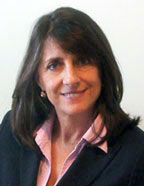Studying for the Test by Taking It
A version of this article appeared in print on November 22, 2014, in the New York Times.
PROTESTS are flaring up in pockets of the country against the proliferation of standardized tests. For many parents and teachers, school has become little more than a series of workout sessions for the assessment du jour.
And that is exactly backward, research shows. Tests should work for the student, not the other way around.
In an experiment published late last year, two University of Texas psychologists threw out the final exam for the 900 students in their intro psych course and replaced it with a series of short quizzes that students took on their laptops at the beginning of each class.
“They didn’t like it, at least at first,” said one of the professors, James W. Pennebaker. The other professor, Samuel D. Gosling, added, “For the first few weeks, every time their friends went out drinking, they couldn’t go — they had yet another quiz the next day.”
But they did significantly better than a comparison intro psych class, both in their grades and on a larger quiz that included 17 of the same questions that appeared both in the quizzes and on the other class’s midterm. The quizzes were especially beneficial for the type of students — many from low-performing high schools — who don’t realize how far behind they are until it’s too late.
One leading researcher in this field, Henry L. Roediger III of Washington University in St. Louis, argues that tests of varying scale and intensity can deepen learning. “We now know that testing, including self-testing, is an especially powerful form of study,” said Dr. Roediger, co-author of the book “Make It Stick.”
How so? Because retrieving facts, formulas or concepts is a threefold mental act: finding the sought-after information in the vast catacombs of the brain; bringing it consciously to mind; and finally, storing it. That newly stored memory will be embedded in a host of additional associations and connections and be much easier to recall later than if you’d merely read it again.
Testing has so many dimensions that it can often be easily disguised. In a study published last month, the cognitive scientist Doug Rohrer of the University of South Florida made a clever change in the math homework of middle school students in Tampa, Fla. Working with teachers, he essentially gave each student two types of assignments. To test some skills they got so-called blocked practice — concentrated drills on a single thing, like solving for X. On other skills they got mixed practice, that is, blending certain skills — say graphing — with other types of problems from the course.
The rationale was straightforward. Practicing skills in isolation leads to noticeable improvement, but students do not have to shift gears. They know how to proceed because the assignment says “graphs” or “solving for X” at the top of the page.
Yet at the end of the term, on a surprise test, the students solved 72 percent of the problems that they’d studied in mixed sets, compared with 38 percent of those in blocked, homework-as-usual sets. The problems and teachers were the same, and the classes were taught as usual. The only change was in the homework.
In the jargon of the field, this strategy of mixed problem-sets is called interleaving. It is distinct from the end-of-unit reviews that teachers commonly give, because it’s self-guided and continual. It mimics a test in a crucial way, in that it forces students to distinguish between types of problems and decide which strategy is appropriate.
The beauty of broadening testing beyond basic assessment is that the approach can be applied at home, easily, for students of all ages. Most young children squirm through their homework, but many love to play teacher. By cutting short “study time” and asking them to be the teacher, parents can make the session more fun, more interactive and a richer learning experience. Teaching is self-testing of an especially potent kind.
Ditto for making an outline of a chapter (with the book closed), or discussing the material with a friend or roommate. One reason scientists suspect that studying in pairs or groups can be helpful is that students are forced to talk to one another about the material — or better yet, argue about it. These are all forms of self-examination, and as such deepen learning more than passively rereading or reviewing the material.
The brain is an exotic learning machine, to put it mildly. It does not take orders well. You can tell it to remember the major players in the settling of Manhattan, stress how crucially important that is, and on the test a week later very little comes back. And yet you might remember nearly every play in the San Francisco Giants’ Game 7 World Series victory. Why? Because the brain doesn’t listen to what you say; it watches what you do. And thinking often about Madison Bumgarner pitching, talking about the game, arguing about it: These are mental actions, as well as subtle forms of testing knowledge.
Testing in all its permutations, subtle and otherwise, convinces the brain that the knowledge is useful, and important. And by varying one’s testing strategies, the actual final exam — the dreaded assessment — isn’t nearly as scary.
Benedict Carey is a science reporter for The New York Times and the author of “How We Learn: The Surprising Truth About When, Where, and Why It Happens.”

